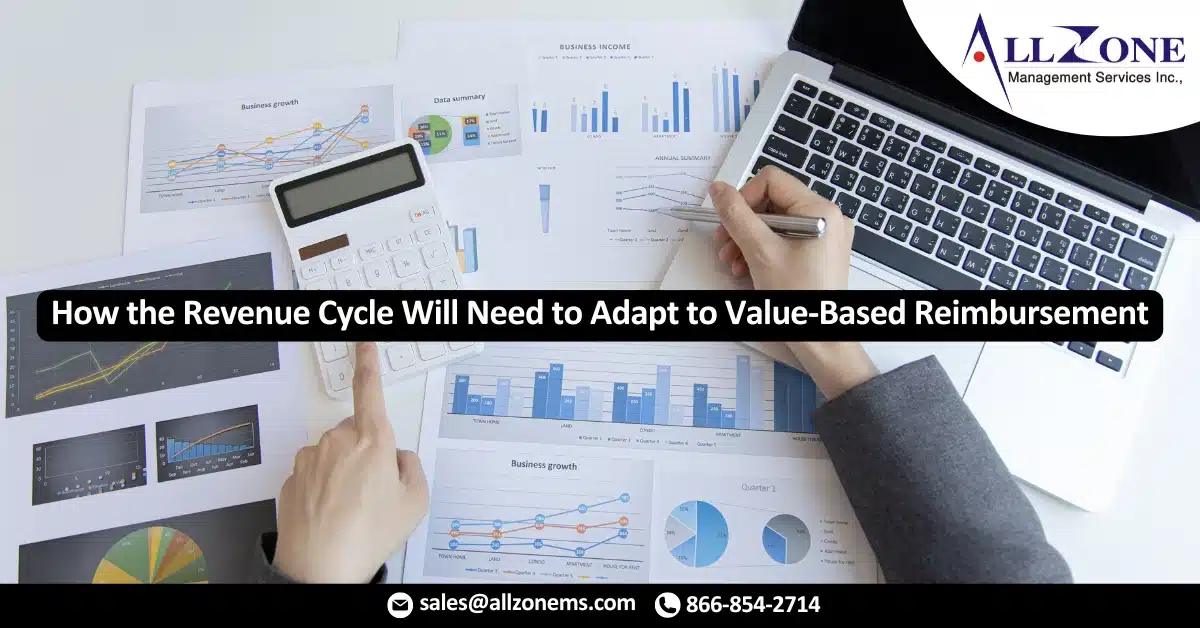Value based payment models are undoubtedly the future of health care. The number of commercial and governmental ACO contracts alone increased by an average of 63% annually from Q1 2011 to Q1 2018, according to a Muhlestein et al. analysis of Leavitt Partners’ data. Though commercial payers have been slower to adopt other models that are prevalent in government programs (e.g., bundled payments), HBI and industry surveys indicate that organizations’ share of reimbursement tied to value-based contracts is ultimately increasing.
These models have the potential to completely transform the revenue cycle—and at some organizations are already resulting in changes to CDI, case management, and utilization review processes, according to HBI research. In addition to these areas, leaders should be prepared to adapt in the following three core revenue cycle functions as well:
Analytics
Revenue cycle performance analysis in the fee-for-service environment consists of turning claims data into meaningful metrics such as cost-to-collect, A/R days, and denial rates. Under value-based reimbursement, however, revenue cycle leaders and analysts will need to become more comfortable with measuring performance—or perhaps more often forecasting it—based on quality data as well. The revenue “cycle” won’t just revolve around amounts billed to insurance companies, it will also be driven by expected bonus payments or penalties that aren’t tied to individual claims, and leaders will need to be able to predict whether their organizations are going to receive those additional revenues or experience recoupments at the end of the month, year, or other contracted time period.
They will also need to be able to reconcile value-based payments when they do arrive to ensure the organization is receiving appropriate reimbursement. To support this type of analysis, organizations will also need to invest in technologies or staff (e.g., data scientists) that can marry clinical and financial information, including claims data from payers.
Some organizations are enhancing or developing enterprise data warehouses, which can store disparate and even external datasets so organizations can see where and when patients are receiving care outside of their systems. For example, a West Coast organization HBI has spoken with is using its enterprise data warehouse, which contains CMS claims data, to track care gaps occurring among patients with complex chronic conditions (e.g., hypertension) that are subject to performance requirements within its value-based contracts and ACO.
Patient Interactions
Revenue cycle staff who interact with patients will need to be more attuned to factors outside of hospital walls such as housing and transportation that ultimately influence patients’ health—what are commonly called social determinants of health. Whether or not tracking and/or providing assistance with SDoH are required by value-based contracts, these factors influence organizations’ ability to succeed under them. For example, patients who lack transportation tend to miss more appointments, which can put them off track of care plans intended to help the organization meet quality goals. Patients who lack employment may choose not to continue with their care plan due to cost.
Patients who lack consistent sources of healthy food may not be able to properly control chronic conditions that are subject to value-based requirements. Patients who are homeless tend to have higher rates of readmission—a commonly evaluated metric that could become a component of value-based arrangements—than patients with stable housing. By giving frontline revenue cycle staff the tools and training to consider these factors in their conversations with patients, they can tailor their interactions throughout the care continuum to support value-based goals. This could come in the form of making more phone calls to certain high-risk patients to remind them of their appointments, asking additional questions during registration if there is a suspected social determinant of health that could impact quality outcomes, and giving reminders of prescriptions, upcoming appointments, and/or community-based services during follow-up calls.
Registrar accuracy is also particularly vital, as it supports organizations in identifying patients whose episode of care falls under a value-based contract and initiating care management processes accordingly.
Denial Management And Prevention
While revenue leakage under fee-for-service reimbursement typically occurs on a claim-by-claim basis in the form of denials, value-based payment discrepancies may often result from factors beyond individual accounts. Teams involved in denial management and prevention will thus need to think about claims with a more holistic perspective, or as parts of larger episodes of care that could include visits outside of the health system (e.g., does a series of claims reveal a care gap that could lead to a penalty?).
For example, on the back-end, staff involved in claim submission have a particular opportunity to serve as the last line of defense to ensure the care provided and its documentation supports value-based goals. Staff who are responsible for identifying root causes of denials could also begin identifying root causes for value-based reimbursement issues. As hinted at before, registration staff could be held accountable for errors that lead to value-based payment discrepancies. At any point organizations are holding staff accountable for denials, they can start incorporating value-based concepts.
These are by no means the full extent of ways revenue cycle departments will need to adapt, but leaders may want to keep these points of consideration on their radars. The more effectively revenue cycle departments can provide operational support for value-based contracts, the more successful organizations will be in securing reimbursement.
For More Information: https://www.healthcarebusinessinsights.com/blog/revenue-cycle/revenue-cycle-will-need-adapt-value-based-reimbursement/

